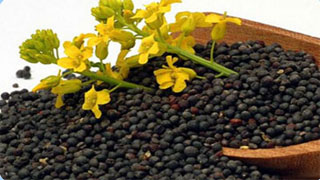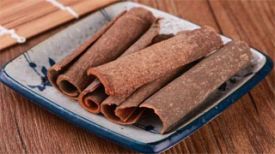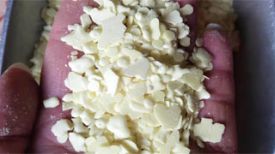
1. Alias
Rapeseed, Brassica seed, Brassica seed.
2. Plant morphology
Two year old herb, 30-90 centimeters tall. Hairless, with a hint of powdery frost. The stem is upright and sturdy. The basal leaves are 10-20 centimeters long, with a large head that splits into a feather shape. The apical lobes are round or oval in shape, and there are 5 pairs of lateral lobes that are oval in shape; The lower stem has leaves that are feather shaped and half lobed, with the base extending and embracing the stem. Both sides have hard hairs and edge hairs. The upper stem has leaves that are violin shaped or oblong lanceolate, with a heart-shaped base and embracing the stem. There are hanging ears on both sides, and the entire edge or has wavy fine teeth. The inflorescence grows at the top of the branch, with an umbrella shaped flowering period, 4 sepals, yellow with green; Petals 4, bright yellow, inverted or round, 3-5 mm long, with short claws at the base, stamens 6, 4 long and 2 short, long stamens 8-9 mm, short stamens 6-7 mm, filaments fine thread shaped, ovary cylindrical, 10-11 mm long, upper part gradually thinner, style obvious, stigma swollen into a head shape. The long horned fruit is strip-shaped, 3-8 centimeters long, 2-3 millimeters wide, with a beak at the tip of 9-24 millimeters, and a stem of 5-15 millimeters long. The seed is spherical, with a diameter of about 1.5 millimeters, reddish brown or black, and nearly spherical. The flowering period is from March to May, and the fruiting period is from April to June.
3. Origin distribution
To cultivate plants, one prefers fertile and moist soil. The main production areas are the Yangtze River Basin and the northwest.
4. Harvesting and processing
Between April and June, when the seeds are ripe, cut off the aboveground parts, dry them, knock off the seeds, remove impurities, and dry them.
5. Characteristics of medicinal herbs
The seeds are nearly spherical with a diameter of 1.5-2 millimeters. The surface is reddish brown or brownish black, with a mesh like texture observed under a magnifying glass, and a black polka dot shaped navel at one end. There are two cotyledons inside the seed coat, which are thick, milky yellow, and rich in oil. They are relatively folded along the midrib, and the embryonic root is located between the two longitudinally folded cotyledons. The air is faint and the taste is light. The best ones are those with plump seeds and bright color.
6. Sexual Taste Returning to the Classics
Flat in nature, spicy and sweet in taste. Return to the liver meridian and colon meridian.
7. Effect and Function
Promote blood circulation and remove blood stasis, reduce swelling and disperse lumps, moisten the intestines and promote bowel movements. It belongs to the category of blood activating and stasis removing drugs for regulating blood circulation and meridians.
8. Clinical application
Oral administration: decoct soup, dosage 5-10 grams, or add pills or powder. External use: appropriate amount, apply after grinding. Indications include postpartum lochia, abdominal pain caused by blood stasis, dysmenorrhea, intestinal bleeding under wind, blood dysentery, rheumatic joint swelling and pain, abscess swelling and erysipelas, breast abscess, constipation, and adhesive intestinal obstruction.
9. Pharmacological research
It has antibacterial properties and has a certain inhibitory effect on Gram positive cocci. In addition, this product contains a large amount of vegetable oil and has the effect of moistening the intestines and promoting bowel movements.
10. Chemical composition
It mainly contains glucose turnip mustard extract, glucose isothiocyanate pent-4-ene ester, previously known as Yichun, as well as fatty oil, protein, rutin, brassinosteroids, 22 dehydrobrassinosteroids, and various amino acids.
11. Usage taboos
Individuals with Yin blood deficiency and loose stools are prohibited from taking it.
12. Compatibility prescription
① Treatment of hemorrhoids, leakage and intestinal wind: use 120 grams of brassica seeds as the end, use good wine paste pills, wutong seeds are large, and take 30 to 50 pills every time. Warm wine served, take one drink per day. (Pope Francis)
② Treatment for cerebral wind and migraine: 0.3g of Brassica napus, 0.9g of Chuanda Huang, finely ground Luo into powder, take a small amount and blow it into the nose, and then yellow water will come out. If there is stubborn hemp, apply it with vinegar. (Holy Blessing Formula)
③ Treatment of adhesive intestinal obstruction: 150g of Brassica napus and 60g of fennel, decoct in water and take in divided doses. (Qingdao Herbal Medicine Handbook)
④ Treat all kinds of erysipelas throughout the body: Take 30g of Brassica napus seeds, pour a large cup of wine on top, grind off the dregs, boil it for five or seven times, and take it warm at all times. (Guidelines for Diagnosis and Treatment)
⑤ Treatment of constipation: 9-12g of Brassica napus (6g for children), 9g of Magnolia officinalis, 6g of Angelica sinensis, 6g of Fructus Aurantii, decoct in water and take orally. (Hunan Pharmaceutical Journal)
⊙ The content of the article is for clinical reference only. Non TCM professionals are not allowed to test drugs.


